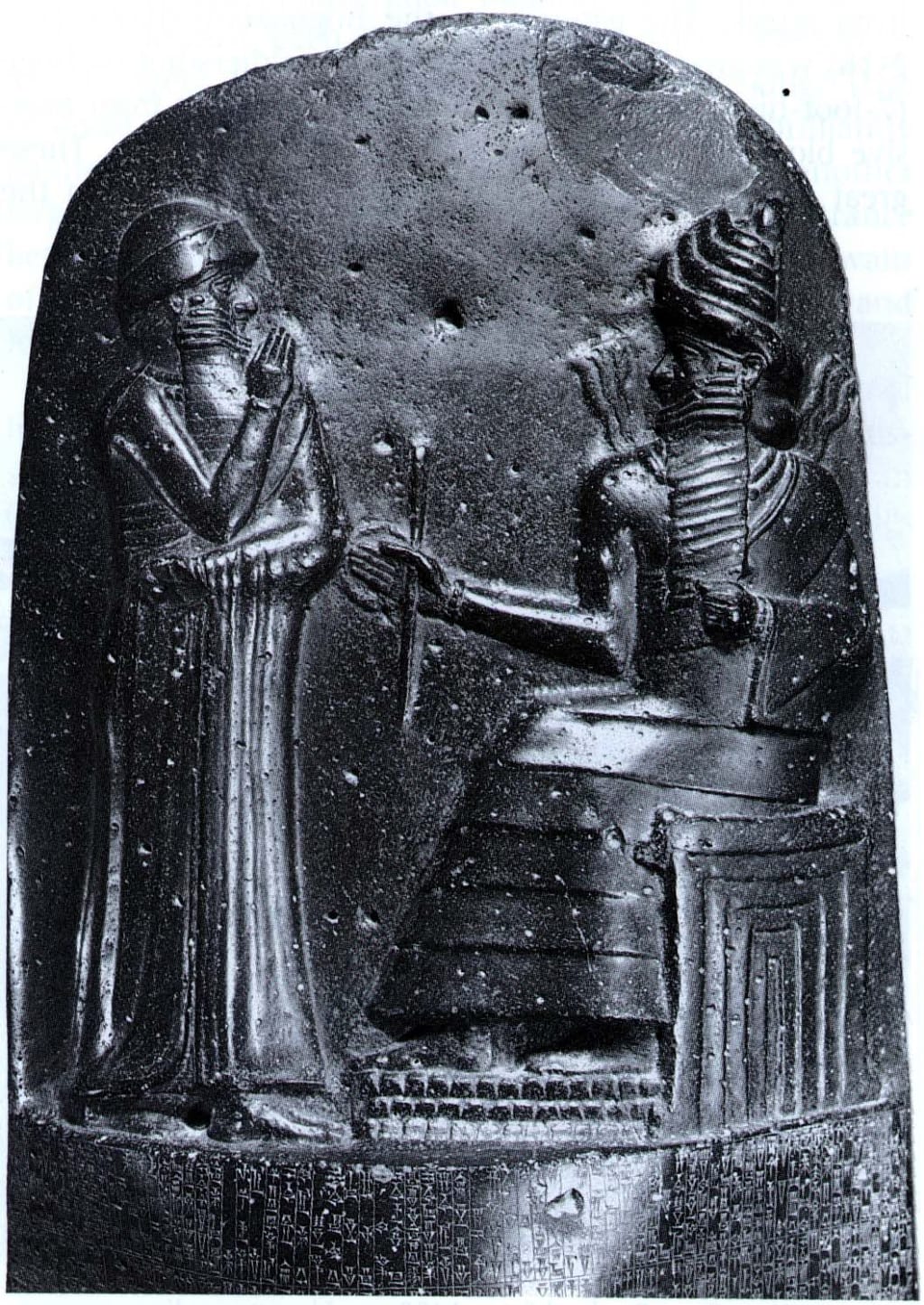Law Code Stele of King Hammurabi
Babylonian Stele: Large stone slabs inscribed with laws, decrees, or significant events, such as the Code of Hammurabi, showcasing advanced legal and societal structures.

The Law Code Stele of King Hammurabi is one of the most significant artifacts from ancient Mesopotamia, providing an invaluable glimpse into the legal, social, and economic life of the time. This monumental basalt stele, inscribed with one of the earliest and most comprehensive legal codes, stands as a testament to the sophistication and administrative acumen of the Babylonian civilization under King Hammurabi’s rule in the 18th century BCE.
King Hammurabi, the sixth king of the First Babylonian Dynasty, ruled from 1792 to 1750 BCE. His reign is noted for the expansion of Babylon into a powerful city-state and the establishment of a centralized government. The creation of the Code of Hammurabi was a significant part of his legacy, aiming to unify the diverse groups within his empire under a common legal framework. The stele, which is over seven feet tall, was discovered in 1901 by French archaeologist Jacques de Morgan in Susa, Iran, where it had been taken as plunder.
The stele is carved with 282 laws, written in Akkadian cuneiform script. These laws cover a wide range of topics, including trade, property, family relationships, labor, personal injury, and professional conduct. The Code of Hammurabi is particularly notable for its structured approach to justice, emphasizing the principle of lex talionis, or the law of retaliation, often summarized by the phrase “an eye for an eye, a tooth for a tooth.” This principle was intended to provide a clear and proportional response to offenses, thereby maintaining social order and deterring criminal behavior.
The stele begins with a prologue, where Hammurabi proclaims his divine right to rule and his role as the shepherd of his people. He asserts that the laws were given to him by the gods, specifically Shamash, the sun god and god of justice, whose image is depicted at the top of the stele handing over the laws to the king. This divine endorsement was crucial in legitimizing the code and ensuring its acceptance among the populace.
The laws inscribed on the stele are organized into categories, dealing with various aspects of daily life and governance. For example, there are laws regulating trade and commerce, which established standards for weights and measures, outlined penalties for fraud, and set terms for loans and interest rates. Property laws detailed the rights and responsibilities of landowners and tenants, while family laws addressed issues such as marriage, inheritance, and the protection of children and women.
One of the striking features of the Code of Hammurabi is its attention to social justice and the protection of the vulnerable. While the punishments prescribed could be harsh, the code sought to ensure fairness and accountability. For instance, it included provisions for the protection of widows and orphans, the fair treatment of slaves, and the rights of laborers. This emphasis on justice and equity highlights Hammurabi’s intent to create a cohesive and stable society.
The epilogue of the stele reinforces the king’s commitment to justice and his desire for the laws to endure. Hammurabi calls upon future rulers to uphold the code and warns against altering or disregarding the laws. He emphasizes that adherence to the code would bring prosperity and harmony to the kingdom, while deviation would lead to chaos and divine retribution.
The discovery and study of the Law Code Stele of King Hammurabi have had profound implications for our understanding of ancient legal systems and the development of human civilization. The code provides critical insights into the values, norms, and administrative practices of ancient Mesopotamia. It also highlights the early use of written laws to govern complex societies, demonstrating the importance of legal frameworks in the maintenance of social order and justice.
As researchers continue to examine the stele and its inscriptions, more details are expected to emerge about the legal, social, and economic life in ancient Babylon. This ongoing research will likely uncover further aspects of Hammurabi’s governance, the implementation of the laws, and their impact on the society. By delving deeper into these findings, historians hope to gain a more comprehensive understanding of how the Code of Hammurabi influenced subsequent legal traditions and contributed to the evolution of legal thought.
About the Creator
Marveline Merab
“History never repeats itself. Man always does.”
― Voltaire
Enjoyed the story? Support the Creator.
Subscribe for free to receive all their stories in your feed. You could also pledge your support or give them a one-off tip, letting them know you appreciate their work.






Comments
There are no comments for this story
Be the first to respond and start the conversation.